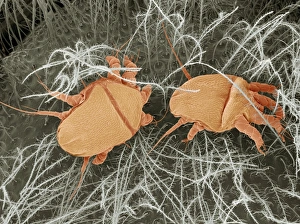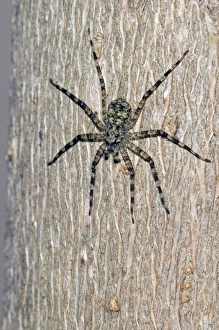Arachnida Collection (page 16)
Arachnida, a diverse class of arthropods, encompasses a wide range of fascinating creatures
All Professionally Made to Order for Quick Shipping
Arachnida, a diverse class of arthropods, encompasses a wide range of fascinating creatures. From the Heteropoda venatoria, commonly known as the huntsman spider, to the tiny mite that feasts on cheese under an electron microscope (SEM), these creatures never cease to amaze. In the world of arachnids, there is no shortage of unique species. Take for example the False-colour SEM image of Tetranychus, a red spider mite; its intricate details and vibrant colors are truly mesmerizing. Similarly captivating is the Sheep tick captured through SEM, showcasing its formidable presence. But it's not just their appearance that captivates us; even microscopic arachnids like the Eyelash mite leave us in awe. Under SEM, we can observe their delicate bodies and intricate features up close. On another end of the spectrum lies Misumena vatia - a yellow female Goldenrod crab spider perched gracefully on an Honesty flower in Bristol, UK. The Ogre faced/Net-casting spider (Deinopis sp) takes hunting to another level with its web held between legs ready to ensnare unsuspecting prey. And let's not forget about Sarcoptes scabiei - better known as scabies mites - which unfortunately cause discomfort for humans but still fascinate scientists studying them under microscopes. Even something as seemingly insignificant as eyelash mite tails become intriguing when examined through SEM. The Tailless whip scorpion stands out with its peculiar appearance and behavior while Spider mites continue to astound researchers with their ability to survive and thrive in various environments. Lastly, Oligonychus ununguis showcases yet another type of red spider mite that leaves us marveling at nature's diversity within this class called Arachnida.















